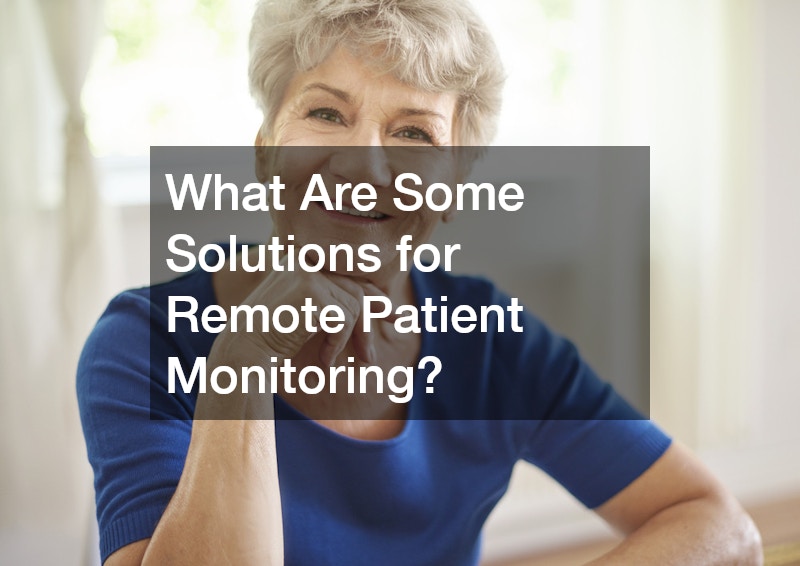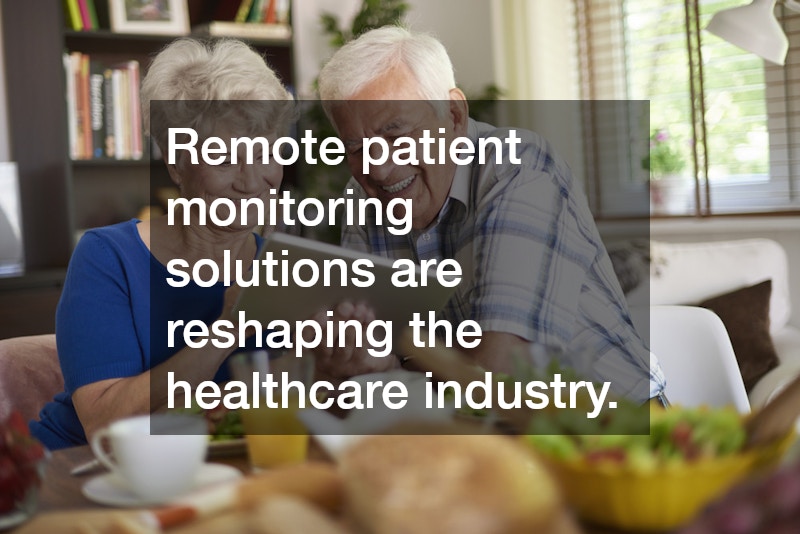

Remote patient monitoring (RPM) has revolutionized healthcare by enabling continuous tracking of patient health outside traditional medical settings. Through innovative technologies and tools, healthcare providers can gather real-time data and offer proactive care. A top telehealth remote patient monitoring app is at the core of many solutions, providing accessible and efficient ways to bridge the gap between patients and providers. Here are some of the most effective solutions for remote patient monitoring and how they are transforming healthcare.
Wearable Devices
Wearable devices are among the most popular solutions for remote patient monitoring. These devices are designed to track vital signs such as heart rate, blood pressure, oxygen saturation, and even activity levels. Examples include smartwatches, fitness trackers, and specialized medical-grade wearables.
By syncing with a top telehealth remote patient monitoring app, these devices transmit real-time data to healthcare providers. This allows for early detection of irregularities, timely interventions, and better management of chronic conditions like diabetes or heart disease. Patients benefit from convenience and the ability to monitor their health independently.
Smart Medical Equipment
Smart medical equipment takes remote monitoring to the next level by offering advanced tools for specific health conditions. Devices like glucometers for diabetes, digital blood pressure monitors, and portable ECG machines are examples of smart equipment integrated with RPM systems.
These devices connect seamlessly with telehealth apps to provide accurate readings that healthcare providers can review. For example, a patient managing hypertension can use a digital blood pressure monitor to record daily readings. The data is then transmitted to their provider, enabling adjustments to treatment plans without requiring frequent office visits.
Mobile Health Apps
A top telehealth remote patient monitoring app serves as a central hub for managing patient data, scheduling virtual consultations, and sharing insights between patients and providers. These apps are equipped with features like:
- Data Tracking: Logs vital signs and health metrics.
- Medication Reminders: Ensures adherence to prescribed treatment regimens.
- Educational Resources: Provides information to help patients manage their conditions better.
- Communication Tools: Facilitates direct communication through messaging or video calls.
By integrating with wearable devices and other monitoring tools, these apps offer a comprehensive solution for remote healthcare management.
Cloud-Based Platforms
Cloud technology plays a crucial role in remote patient monitoring by enabling secure storage and access to patient data. Cloud-based platforms collect, process, and analyze data from various devices and make it available to healthcare providers in real time.
A cloud-integrated top telehealth remote patient monitoring app ensures that data is accessible from anywhere, providing continuity of care even when patients switch providers or relocate. These platforms also allow for better collaboration among healthcare teams, leading to more informed decision-making.
Artificial Intelligence and Machine Learning
Artificial intelligence (AI) and machine learning (ML) are transforming RPM by providing predictive insights and automating processes. AI algorithms analyze large volumes of patient data to identify patterns and trends that may indicate health issues.
For instance, a top telehealth remote patient monitoring app equipped with AI can predict potential complications for patients with chronic conditions. Providers can receive alerts about patients at risk, allowing them to intervene proactively. These technologies not only improve patient outcomes but also reduce the workload for healthcare professionals.
Video Consultation Tools
Video consultations are a vital component of RPM solutions, enabling face-to-face interaction between patients and providers. These tools are often integrated into telehealth apps, allowing healthcare professionals to assess symptoms, discuss treatment plans, and provide guidance without requiring in-person visits.
For patients in remote areas or those with mobility challenges, video consultations offer a lifeline to timely medical care. Providers also benefit from the ability to reach more patients while maintaining high-quality care.
Home Monitoring Kits
Home monitoring kits are comprehensive RPM solutions that include multiple devices tailored to a patient’s needs. These kits often include tools like blood pressure monitors, thermometers, pulse oximeters, and scales.
Paired with a top telehealth remote patient monitoring app, these kits allow patients to track their health metrics from home. Providers receive a complete picture of the patient’s condition, making it easier to adjust treatment plans or provide recommendations. These kits are particularly beneficial for managing post-surgical recovery or chronic conditions.
Benefits of Remote Patient Monitoring Solutions
Implementing RPM solutions offers numerous advantages for both patients and providers:
- Improved Patient Outcomes: Continuous monitoring allows for early detection and timely interventions, reducing hospitalizations and complications.
- Convenience: Patients can manage their health from the comfort of their homes, avoiding frequent trips to healthcare facilities.
- Cost-Effectiveness: RPM reduces the need for in-person visits, saving time and money for patients and healthcare systems alike.
- Enhanced Engagement: Tools like telehealth apps and wearables encourage patients to take an active role in managing their health.
- Data-Driven Insights: Providers gain access to comprehensive data, enabling personalized and effective care.
Choosing the Right Telehealth Remote Patient Monitoring App
When selecting a top telehealth remote patient monitoring app, it’s important to consider features like:
- Ease of Use: The app should have an intuitive interface for both patients and providers.
- Integration: Ensure compatibility with wearable devices and smart medical equipment.
- Data Security: Look for apps that comply with regulations such as HIPAA to protect patient data.
- Real-Time Alerts: Choose an app that provides timely notifications for potential health issues.
- Customizability: The app should cater to the unique needs of different patient populations and conditions.
Remote patient monitoring solutions are reshaping the healthcare industry, making care more accessible, efficient, and personalized. Whether through wearable devices, smart medical equipment, or a top telehealth remote patient monitoring app, these tools empower patients to take control of their health while enabling providers to deliver better care. By adopting the right RPM solutions, healthcare organizations and individuals can benefit from improved outcomes and a more connected healthcare experience.
.

